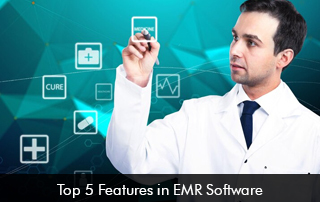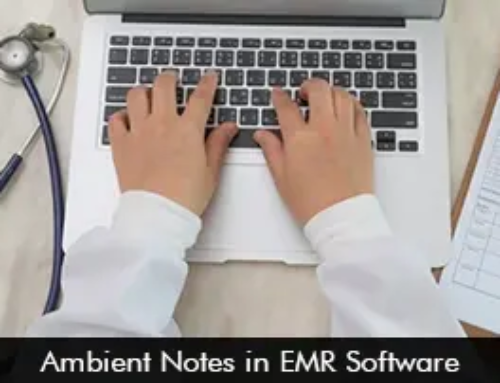Healthcare organizations have been quick to implement the robust technology of Electronic Medical Records (EMR) Software. These systems not only simplify daily clinical, administrative, and financial workflows but also empower providers to enhance patient care. Good EHR Software also comes with patient engagement tools, keeping the patient at the center of care and ensuring quality services are offered.
Critical Information Contained in the EHR Software
To deliver exceptional patient care, clinicians need to have access to all up-to-date patient information. This information is stored in the Electronic Health Records Software to be accessed in real-time by physicians. The EMR System has a wealth of patient data including:
- Patient Medical History
- Complete Medication Information
- Previous Diagnosis and Treatments
- Immunization Record
- Past/prevalent allergies
- All Lab Results
Top 5 Functionalities of EMR Software Systems in 2024
Here is an EHR Software feature checklist for providers to ensure that the system has the right tools. These features can optimize tasks, maximize security, and improve patient care in 2024.
Number 1 – Cloud-Based Functionality
Cloud EMR software provides physicians with an all-inclusive solution to effectively manage patient records and accelerate clinical operations. Its functionality includes safe data storage, quick access to patient records from any internet-connected device, customized documentation templates, automatic invoicing, and coding. Cloud-based electronic health records give practitioners the flexibility to practice on the go, this keeps them informed around the clock to keep an eye on any red flags.
Number 2 – Interoperability and Integration
It is critical to deploy an EMR Software that can easily interface with other systems, including laboratory, pharmacy, and health information exchange (HIE) systems. Care coordination is enhanced as data exchanged between various healthcare providers is made easier via interoperability.
Number 3 – Clinical Decision Support Tools
Electronic Health Records (EHR) Software incorporates clinical decision support capabilities that offer healthcare providers instantaneous feedback and insights to improve patient care decisions. These technologies make use of patient data to provide recommendations for evidence-based treatment alternatives, alerts for aberrant test results, and reminders for screenings for preventive care, drug interactions, and other issues. Clinical decision support tools in EMR systems facilitate providers in lowering medical errors, improving patient safety, and ultimately boosting health outcomes.
Number 4 – Patient Engagement Solutions
It is valuable to strengthen patient relationships. This is only possible when the patient experiences are automated and improved by leveraging patient engagement solutions in EMR Software. Patients can feel empowered by giving them easy access to their medical records via a patient portal software. Patient portals can be used by patients to communicate with care teams, schedule appointments, pay bills, and view lab results from the comfort of their homes. A report revealed that engaged patients reduce costs and recover better. Many EHR Software vendors such as athenahealth EMR Software, advancedMD EHR Software, and Tebra Software offer intuitive and powerful patient engagement tools.
Number 5 –Ambient Intelligence Integration
Physician burnout is a grave issue and is a by-product of tedious clinical documentation. In 2024, it makes sense to ensure that the EMR Software vendor offers ambient intelligence to simplify the documentation process. For Example, Epic EHR System has tapped ambient intelligence to draft clinical documentation during a patient visit in seconds.
Final Takeaway
You may choose an EMR software solution that best suits the requirements of your medical practice by giving these essential characteristics top priority during the evaluation process. In 2024, these features will facilitate the efficient and successful provision of patient care.








